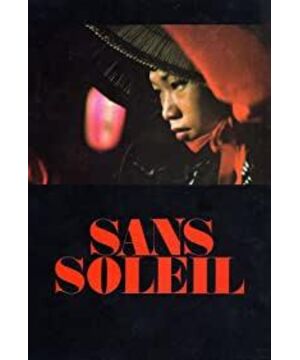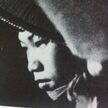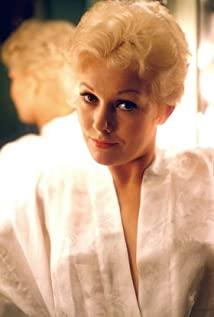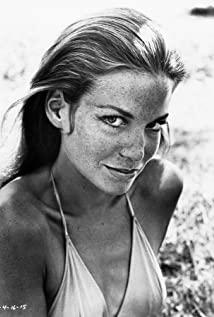sun and moon
1.
While watching The Sun and Moon, I had to stop a few times to digest the sheer volume of content. This size is not the magnitude of the information, it is the strength of Chris Marker's call to the lens.
In the deep sea of memory, he walked around arbitrarily, salvaging pictures.
I watched half of it on the train from Hankou to Shanghai. In Shanghai, my vision was infected by him. The lack of light in the sun and the moon is like a disease spreading. meticulous observation. The most obscure and ordinary details. Just like the crowds walking on the edge of the train security check, they filed in. They grow tentacles and make connections with other details of knowledge, these connections are like the muffled rumbling of magma surging in the depths of the earth, churning violently in the heat.
On the subway, the girl and grandmother playing cards opposite. They fight the wait at the terminal with a deck of cards. They didn't bring umbrellas, they got caught in the rain, and their hair was still wet, and the light-colored coats turned dark, fading back to light. The grandmother wore a camouflage short-sleeved blue knitted jacket, and the girl wore a red dress. They had their legs crossed, half slung over the metal seats. Their game is the flop ratio, the winning side collects the cards, and finally the number of cards on both sides is compared. They repeated the game with relish.
Marker took a shot of the Tokyo subway. Subway in the 80's. The dark crowd handed the small paper tickets to the ticket inspector at the gate, and the white and snow-like pieces of paper fell into the ticket inspector's carton in an orderly manner. Repeat, repeat, individual faces are abstracted into undifferentiated pieces of paper.
His Japanese friend processed the image into the style of printing and dyeing. The clashes of the Japanese movement in the 1960s and the kamikaze members who took off in the 1940s have no specific faces, only the colors of chemical reactions and the violence guessed in the outline.
Marker worries about such memories.
"Under each face, the memory will be replaced by those forged collective memories. Thousands of memories with personal trauma."
But also using paper as the material, the poker game on the subway gives me a different sense of touch. Their repetitions are not abstract, their faces clearer as the rain evaporates, as if defying collective memory and stereotypes to be imposed on them. At the ticket gate of the subway, the person with the round cake box couldn't get through the gate. He stood on tiptoe awkwardly, lifted the box over his chest, and rubbed it reluctantly.
Choose a general image to cover these details. Believe in historical construction. Understanding memory is telling us about our inner system.
Is order to be found in abstract summaries?
2.
How can one remember thirst?
How does one remember thirst? The picture shows Guinea-Bissau women on board. Her lips, eyes, and rushing water. Can the state remind us of times of poverty, stigma and underdevelopment, and can it really remind us of hunger "in connection with it"?
When we go to recall a sense, rather than an emotion, it is rarely possible to trace it back through the replay of the scene. One thing I can remember is anger and sadness. But after a meal, you can't think of hunger, and when it's sweet, you can't think of bitterness. They can only exist as imaginations and metaphors.
Meet friends from Shanghai at Longhua Temple on Zhongyuan Festival. The Lohan Noodles didn't remind me of the feeling of eating meat. Even when I try to think about it, all I think of is a lack, an insatiable lack in the present moment. Lack of connected memory, memory is desire.
Our topic is the divide between technology and public welfare, public and private. It occurred to me that this discussion would become my memory of the meal. a keyword. Not the damp Longhua Temple, not the meaty taste I can't recall, not the crowded vegetarian restaurant on Saturday's rainy morning.
Such memories are more worrying than collectively constructed memories. It effectively and succinctly sums up a two-hour morning. self-complete. It turns the details into a backdrop, giving the individual a series of continuity that can be referenced and recalled. Once again I felt a continuity, and an improvement in personal relationships.
He asked, how do those who do not take pictures remember it.
3.
With the senses, remember a lack.
I am such a bad patient. Malinowski read "The Golden Bough" in his hospital bed, and decided to study anthropology for the rest of his life. Sontag wrote "Metaphors of Disease" in the hospital. I had a cold and lost my sense of smell and taste. I had to lay down on the bed and walk slowly because of my sprained feet, which made me irritable. Illness creates a world without senses.
This lack can only be awakened in lack, not in contentment. I want to remember, but no matter how hard I try, I can't remember. This is more terrifying than forgetting history or reviving some collective memory. I'm not worried about the demise of any symbols or keywords.
Marker is fascinated by cats in Japan. Photographed the temple where cats are kept. During the sacrifice, he found that the child's expression was not fear, but curiosity, as if he wanted to see the other side of death. When will such curiosity disappear? They do not experience death, and those who do not participate in sacrifice experience death.
As fear gradually replaces curiosity, I hope I can still use my senses to remember the lack of fear. Rebellion against closed borders, obliterated details, submerged symbols. I wish I could remember the faces looking at the sky and their mobile phones at the subway entrance on that rainy and humid morning of the Mid-Autumn Festival, as well as their memories of sunny days.
View more about Sans Soleil reviews











